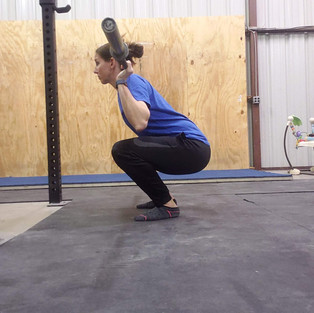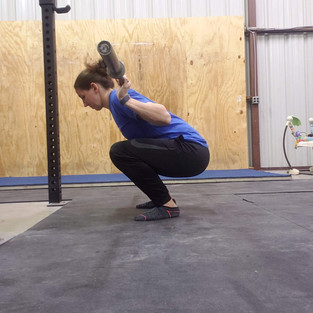Squat and bar position- what difference does it make?
- bodyfix180
- Mar 9, 2020
- 3 min read
Squatting variations: What are they and do they matter?
Back squat and front squats. We can also break further down back squats into high bar and low bar back squats.
Front squat:

The weight is loaded in the front of the person with a direct load over the midfoot to maintain an upright trunk while loading into a squat. The front squat position takes less work in the low back to maintain an upright posture however an adequate amount of midback ROM and strength is needed to avoid dumping forward. Less ankle ROM is required as you can counterbalance yourself with the bar and “sit back” more.
High bar back squat:

The high bar back squat is performed by placing the bar on the muscular shelf created by the upper trap so the bar sits just at the bottom of the neck/ on top of the shoulders. Compared to a front squat, the high-bar back squat will require more forward trunk lean and more hip flexion, but not as much as low bar. The high bar back squat should still be performed with the bar dropping straight down and moving straight up, in line with the midfoot.
Low bar back squat:

The low bar back squat is characterized by placing the barbell further down the back on a muscular shelf created by the rear deltoids or at the spine of the scapula. This creates a need for even more forward trunk lean and hip flexion angle (to keep the bar over midfoot and the path vertical) but it does not require as much ankle dorsiflexion. The low bar squat allows, in most cases, the ability to lift greater loads; as well as placing greater demands on the posterior chain with slightly less quad work.
So which squat is better?
Bottom line. All of them and none of them.
A better question: which squat is better for you?
Everyone has different femur and torso lengths and different mobility which is why everyone’s squat might look a little different. Everyone should squat but not everyone should squat the same. Which feels better to you? What are your goals? If you are a crossfitter and looking to nail those squat cleans and squat snatches the high bar is most going to mimic that set-up. If you are just wanting to move heavy loads, you could look to use the low-bar squat. Bottom line, most people are looking to improve quad and leg strength; and in that case there is essentially no significant difference in quad EMG activity between front squats and high bar squats. A high bar squat tends to be more functional and translates into life. If you lack the mobility to properly perform a high bar squat but can get into a low bar squat- great, do low bar. But work on that mobility to be able to get comfortably in a high bar squat position.
Regardless of the squat there are certain characteristics that all squats have:
1. Bar load will be over midfoot
2. Feet always in contact with the ground: big toe to heel should have an equal distribution
3. Ideally, lumbar spine remains neutral so the core stays braced and force production is not lost
4. Depth- Ass to the grass: studies show that when your back thigh contacts the legs, forces are reduced at the knee join by average of 50%. In fact, not squatting to at least beyond parallel shows huge increase in knee compression forces. Get low!
.png)











Comments